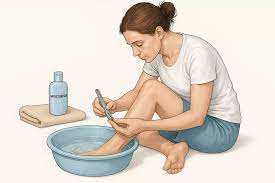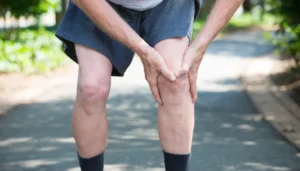Podiatrists are medical specialists who focus on conditions affecting the feet, ankles, and lower legs. For athletes, the health of these body parts is directly linked to their ability to train and compete. Persistent foot or ankle discomfort may limit an athlete’s movement and overall performance. Here is how podiatrists can help athletes improve their performance:
Physical Therapy
Following an injury, a podiatrist might recommend that you undertake a physical therapy program. These programs are designed to assist your recovery and help you restore function. A physical therapist guides you through specific exercises aimed at rebuilding strength and improving flexibility in the affected area.
The therapy process typically involves you following a personalized plan. This plan may include stretching routines to increase joint range of motion and strengthening exercises to support the muscles in your feet and ankles. You can also incorporate balance training to enhance stability and reduce the likelihood of future injuries.
Your physical therapist can monitor your progress and adjust the program as you recover. Stay consistent with the recommended exercises to achieve better results. Your therapist might also guide you on choosing proper footwear or making lifestyle adjustments to support long-term foot and ankle health.
Anti-inflammatory Medications
Inflammation is a typical response to athletic injuries like sprains, strains, or overuse conditions. To manage the associated swelling and discomfort, a podiatrist may suggest anti-inflammatory medications. These medications are available in different forms.
- Oral Medications: Nonsteroidal anti-inflammatory drugs (NSAIDs) are frequently used to reduce inflammation and relieve pain throughout the body.
- Topical Applications: Gels, creams, or patches may be applied directly to the skin over the injured area to target inflammation locally.
In certain cases, a podiatrist can administer a corticosteroid injection. This involves injecting a powerful anti-inflammatory agent directly into the affected joint or tissue to provide targeted relief from swelling and pain. The choice of medication depends on the specific injury and your medical history.
Advanced Therapies
For certain chronic conditions or injuries that do not respond to initial treatments, podiatrists may utilize advanced therapeutic technologies. These methods support the body’s natural healing processes. They inject a concentration of your own blood platelets, called platelet-rich plasma (PRP), into the injury site. Podiatrists may also employ shockwave therapy and MLS laser therapy.
Surgical Options
When conservative treatments do not provide adequate relief or for severe injuries like complex fractures or torn ligaments, surgery may be an option. A podiatric surgeon performs procedures to correct structural problems, repair damaged tissues, or realign bones. Operations could range from minimally invasive arthroscopy to more extensive reconstructive surgery. The decision to proceed with a surgical intervention is made after a thorough evaluation and discussion of your specific condition and athletic goals. Recovery from surgery involves a structured rehabilitation plan to help you return to your activities.
Schedule a Visit With a Podiatrist
Managing foot and ankle health is part of maintaining your athletic capabilities. If you are experiencing pain or limitations that affect your performance, addressing these issues is a proactive step to take. A podiatrist is equipped to evaluate your condition and discuss appropriate treatment options with you. Schedule an appointment with a podiatrist today to get the support you need.














